Boca Juniors are known for being a talent factory and for involving their top talents in the first teams’ squad over the years, including some big names like Carlos Tévez, Éver Banega and Fernando Gago.
Struggling financially, the “Xeneizes” were pushed to look into their youth teams, and lacking options for the left-back position, Valentín Barco established himself in the squad.
The Argentinian made his professional debut at only 16 years old in 2021. However, Barco played the most minutes during this 2023 season. As we will further specify, Valentín is characterised by his offensive involvement and versatility, which allows him to play both as a left-back and a left-winger.
Top European clubs like the Serie A side Juventus and, more recently, Manchester City and Brighton & Hove Albion are vigilant to this 19-year-old talent, and a summer transfer could be imminent.
In this tactical analysis, we’ll detail Valentín Barco as a player and his positioning while playing as a left-back or as a left-winger under Jorge Almirón’s tactics. We hope this analysis clarifies Barco’s potential, weaknesses, strengths and how these influence his game.
What kind of player is Barco?
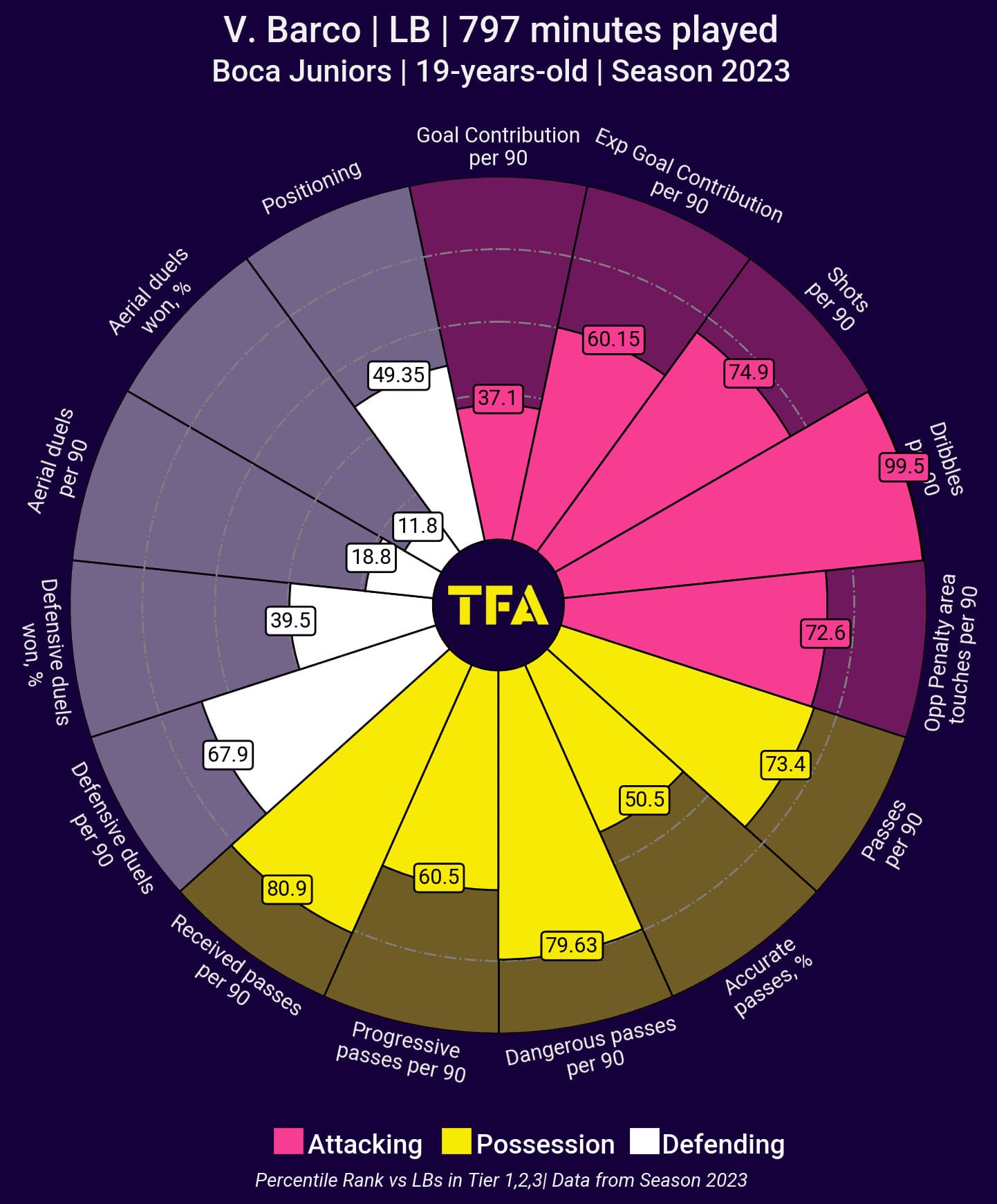
Generally, the Argentinian stands out due to his on-the-ball actions, whether playing as a left-back or a left-winger.
As we can see above, he ranked in the 99.5th percentile on dribbles per 90 minutes, compared to left-backs performing in Tier 1,2 and 3, which is an outstanding stat for such a young player.
Moreover, according to Wyscout, his effectiveness rate in his dribbles is around 60% which is quite decent given the aggressiveness and intensity of the Argentinian football league.
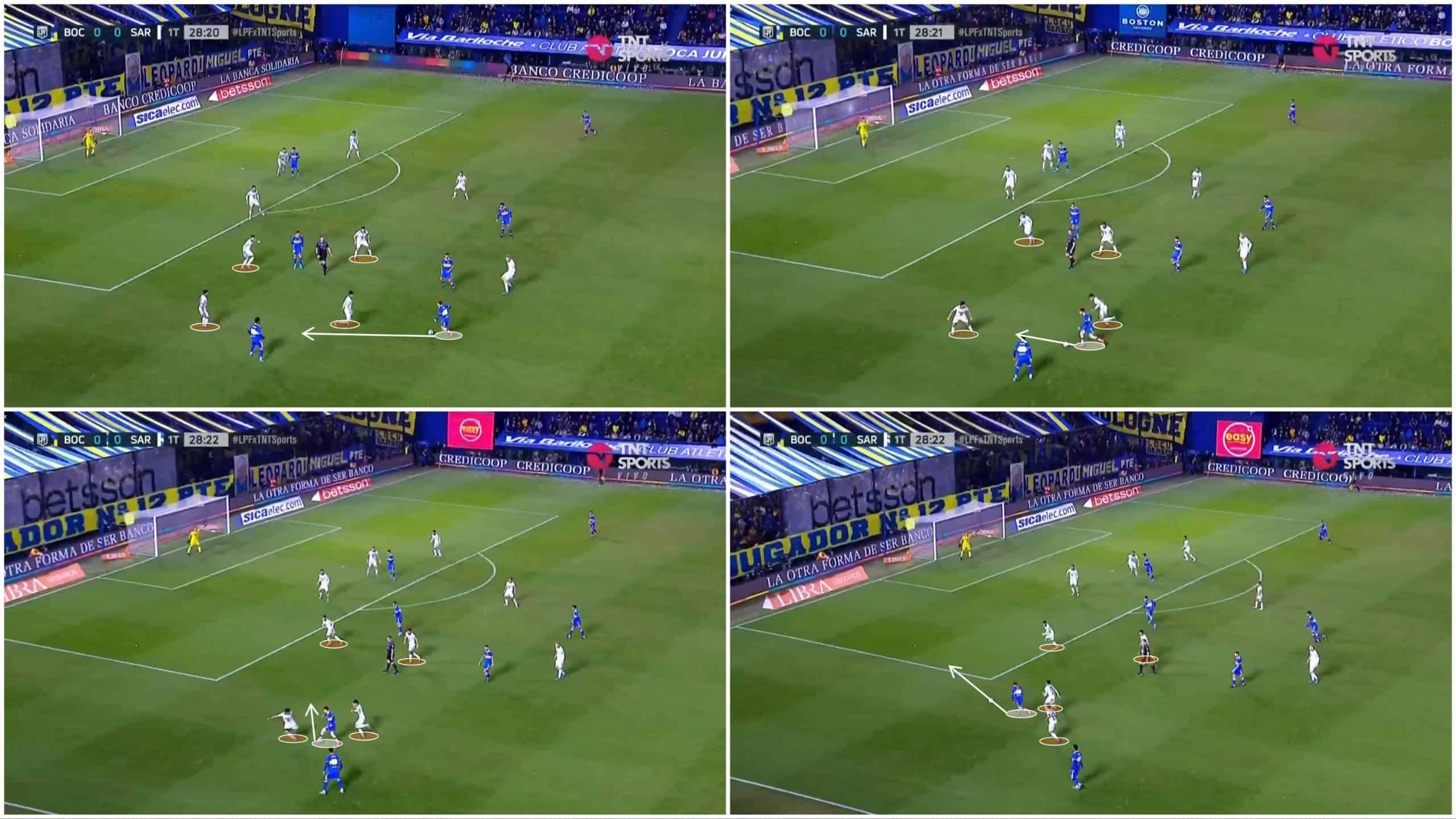
Although this particular feature is present in Barco’s game wherever he is playing, such ball progressions are most commonly observed when he acts as a left-back. As we see it, he goes well in such a feature due to numerous factors, which we will lay over, such as his technicity, agility, creativity and positioning.
Let’s start with his technical attributes. Barco’s quick feet, during the game, deliver remarkable technical movements which allow him to change direction and dribble past his opponents. Yet, in our view, Valentín could use his weaker foot more often, especially when trying to play a more interior game, where using the left foot narrows his game to the left flank.
His passing rate is directly related to his decision-making, and when he ranks in the 50.5th percentile (%) on accurate passing, his judgment on the ball hasn’t been the best. One of the most common patterns of Barco’s game is seeking the attackers through a long ball, whether he is playing as a full-back or a winger.
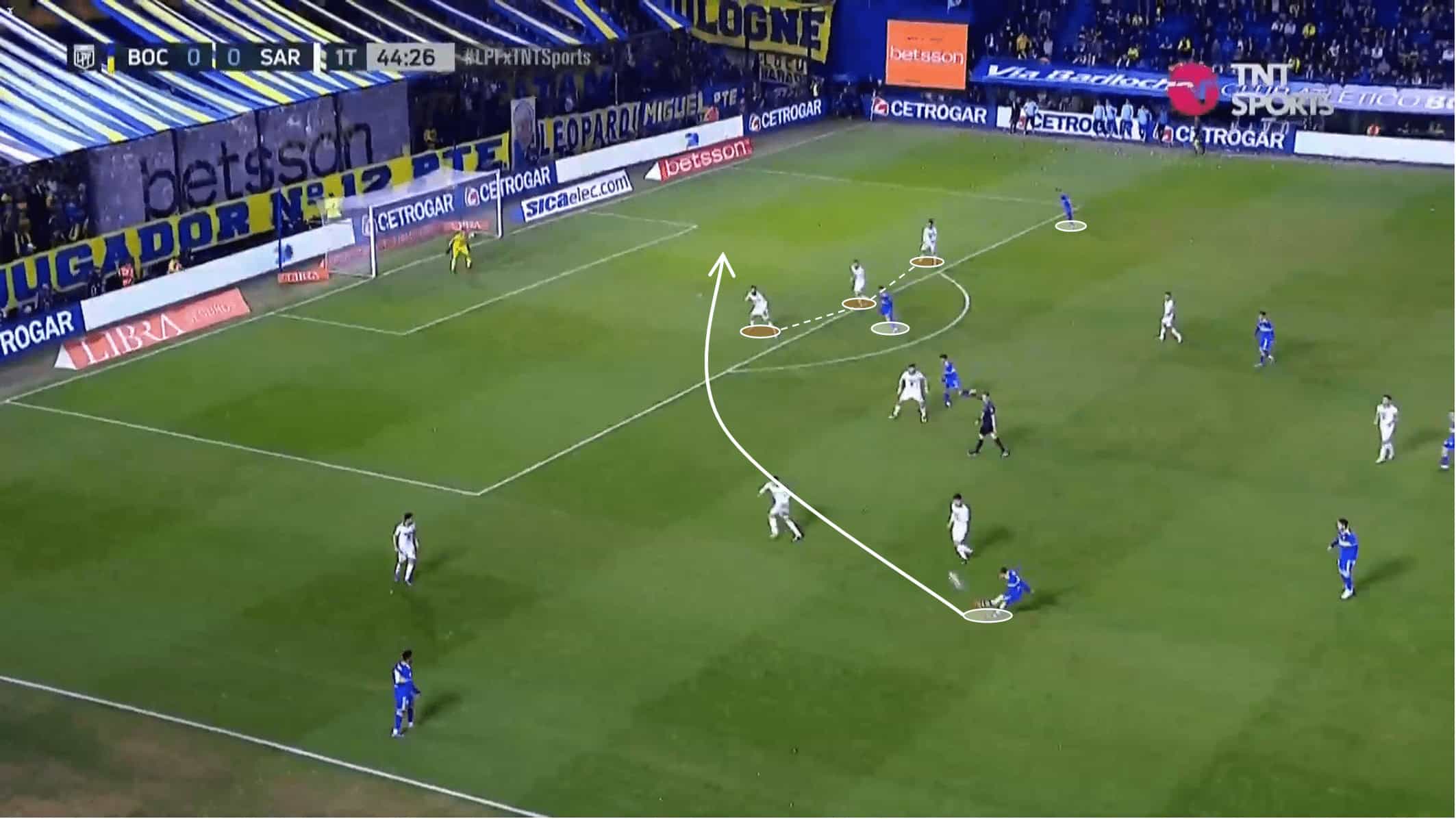
Such an action can be favourable to a quicker approach to the final third. However, it also can demonstrate Barco’s hasty decision-making in some actions. Again resorting to Wyscout, we found out that even though he has an approximation of 70% of pass accuracy, the Argentinian has a 76% inefficiency in the crosses taken this season.
However, it is also important to mention that the youngster’s risky decision-making contributes positively to Boca Juniors’ game plan. As we can see above, he ranked in the 79.63rd percentile on dangerous passes and in the 60.5th on progressive passes per 90 minutes.
We also found impressive Barco’s received passes’ stat, where he ranked in the 80.9th percentile. As we will see, he feels comfortable playing inside, which can be a strong reason for such offensive involvement.
However, throughout our analysis, we also found that Barco usually does instant and quick counter-movements to be open and without any defender’s opposition.
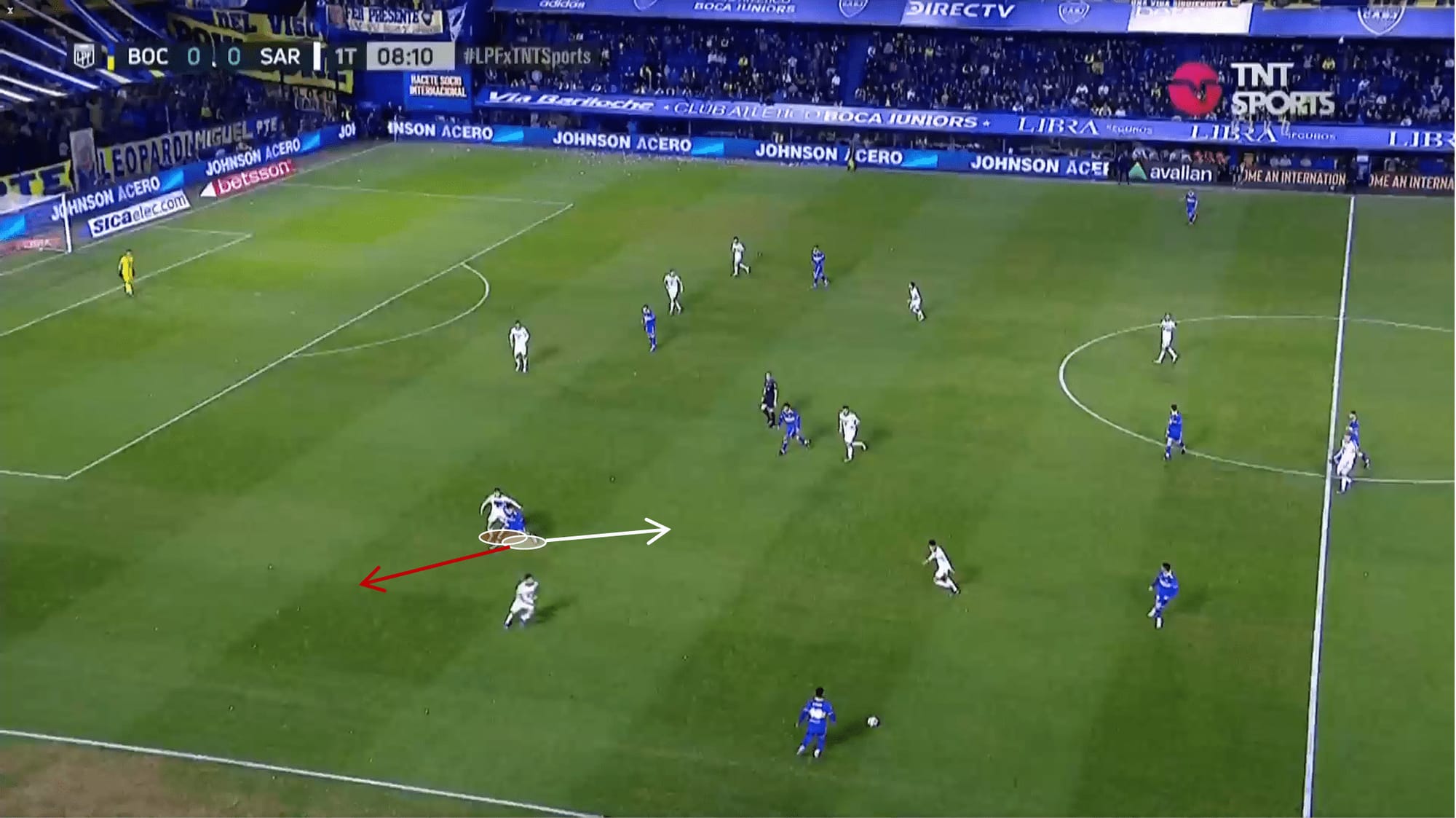
With this, he significantly increases not only the odds of receiving the ball but also the odds of success in his on-ball action.
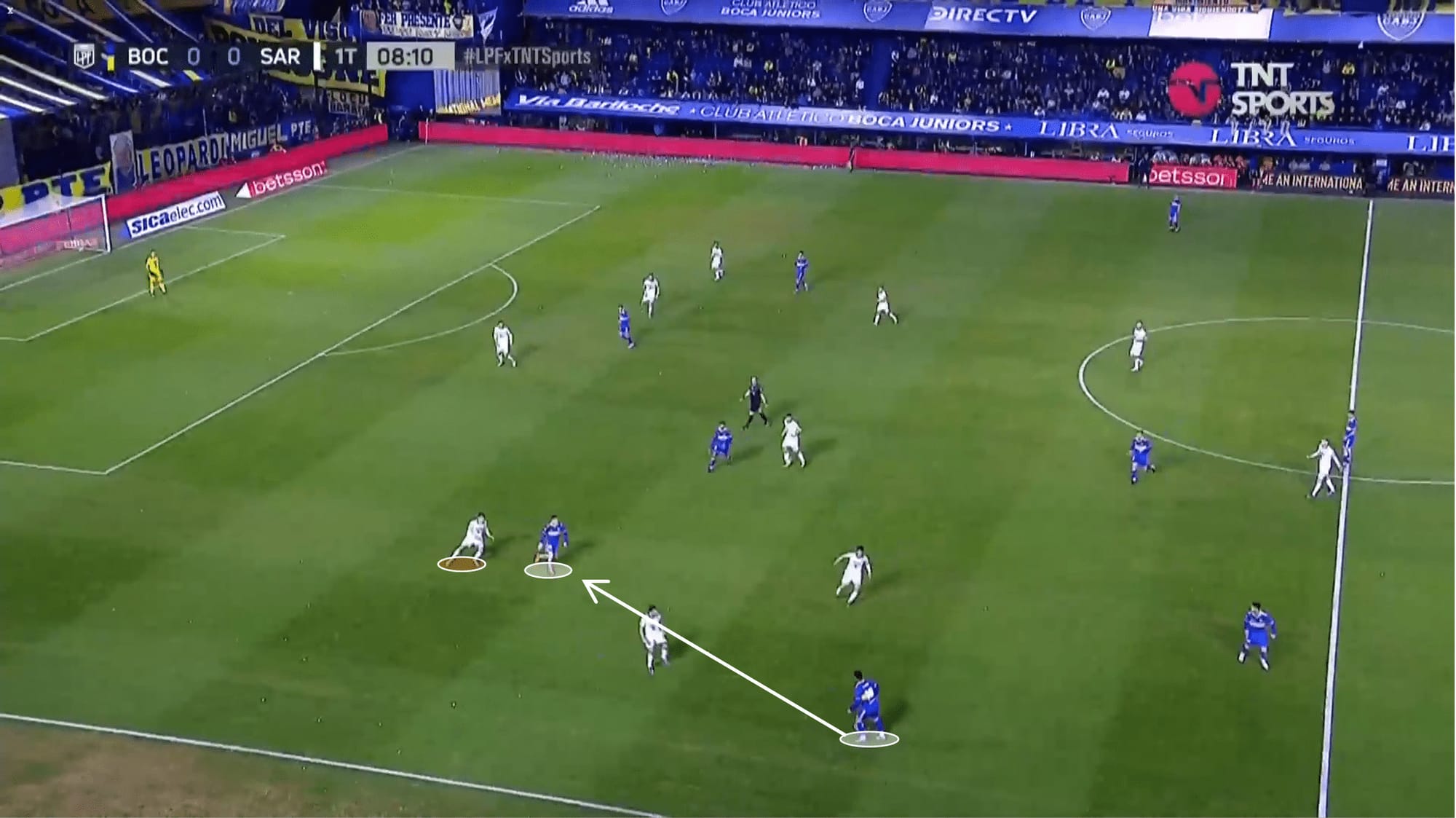
Although he is just 19, Barco’s physical stature affects his game, especially in the disputed duels, both in and out of possession. According to the above radar, he ranked in the 39.5th and 11.8th percentile on defensive duels won (%) and aerial duels won (%), respectively.
In such a physical league, Barco has serious difficulties in maintaining constant contact with the defender during his actions.
Concerning his pace, Barco stands out primarily due to his ability to input such speed while he has the ball. However, we observed that his pace is not particularly noteworthy during a defensive transition.
Valentín a versatile element in Boca’s tactical plan
Since his youth academy days, Valentín Barco was designated to play as a left-back, and Boca followed that line, including him in their first senior team squad. However, as we are going to detail further, not only due to shifts in Boca’s head coach position but also due to Barco’s tactical understanding and technical qualities, in the last few months, Jorge Almirón (current head coach) started placing Barco as a left-winger.
Let’s initially try to understand Almirón’s preferable tactical approach.

As we can see above, Boca generally plays in a 4-3-3, although this model has several changes depending on the different phases of the game. In the build-up, they often prefer to play by a short pass approach, and as it goes, they are positioned in a 2-3-4-1, where the defensive midfielder and full-backs are in the same line, and where a four-men diamond is formed in the midfield.
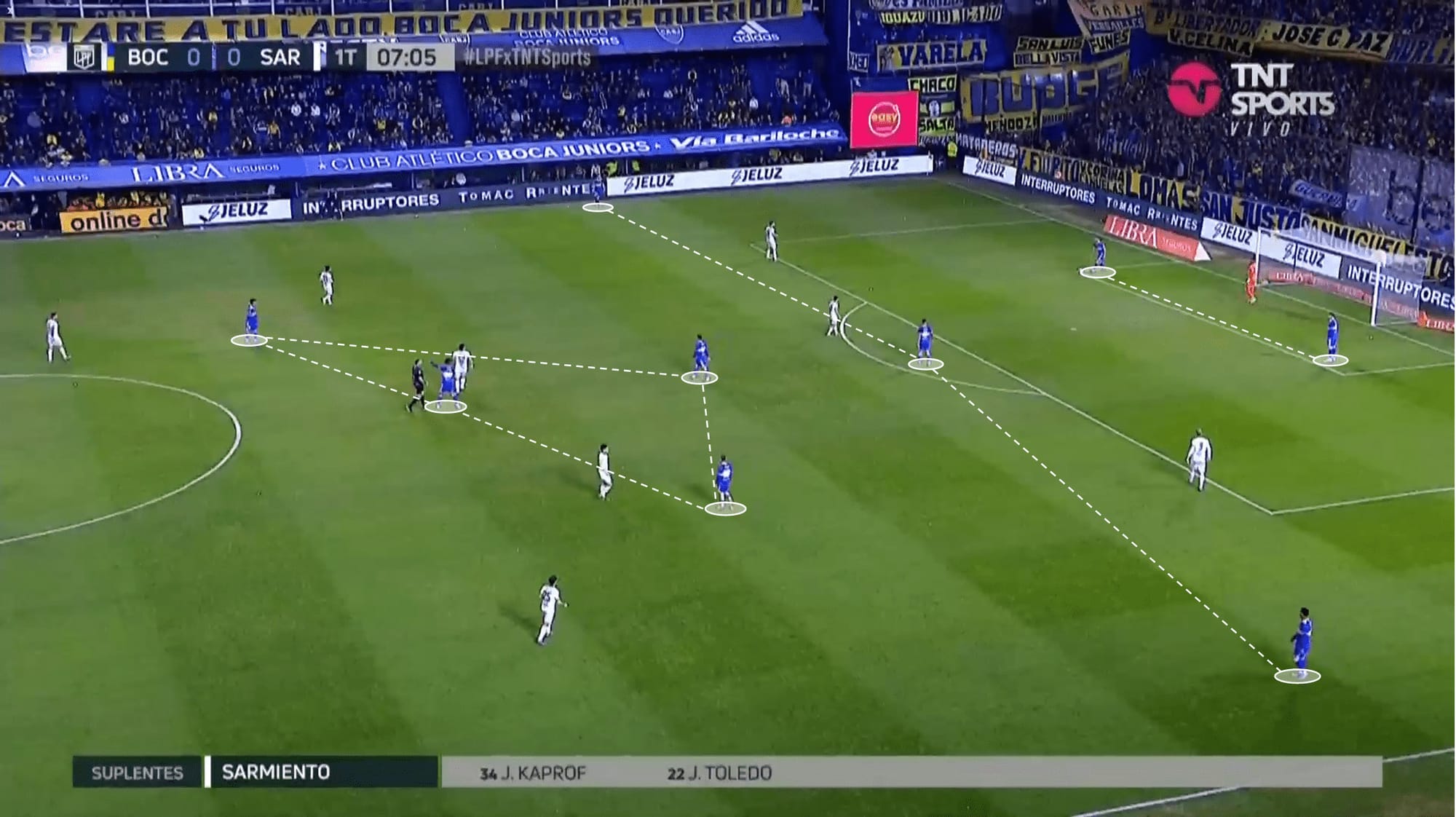
Besides that, it’s also common to see the pivot incorporating the defensive line during the build-up, which is a pretty common move these days, allowing the full-backs to seek their space further on the pitch.
One of the most curious facts about this system is precisely Barco’s positioning, which in the initial phase of the play is the same, whether he’s playing as a full-back or a winger.
This tactical strategy involving the full-backs is also named: inverted full-back. We have an article which describes the main advantages of teams playing with this type of positioning. Generally, there are two main reasons: to misguide the opposition’s pressing plan and to increase the effectiveness of recovering the ball when it’s lost.
Let’s now analyse how Valenín’s positioning influences the pressing plan of the opponents. Barco’s inside positioning inside creates confusion for the opposition, especially the winger/midfielder, or he decides not to press, and Barco has plenty of space to play, or he presses inside and leaves his full-back in a 1v1 against the winger, which is the case.
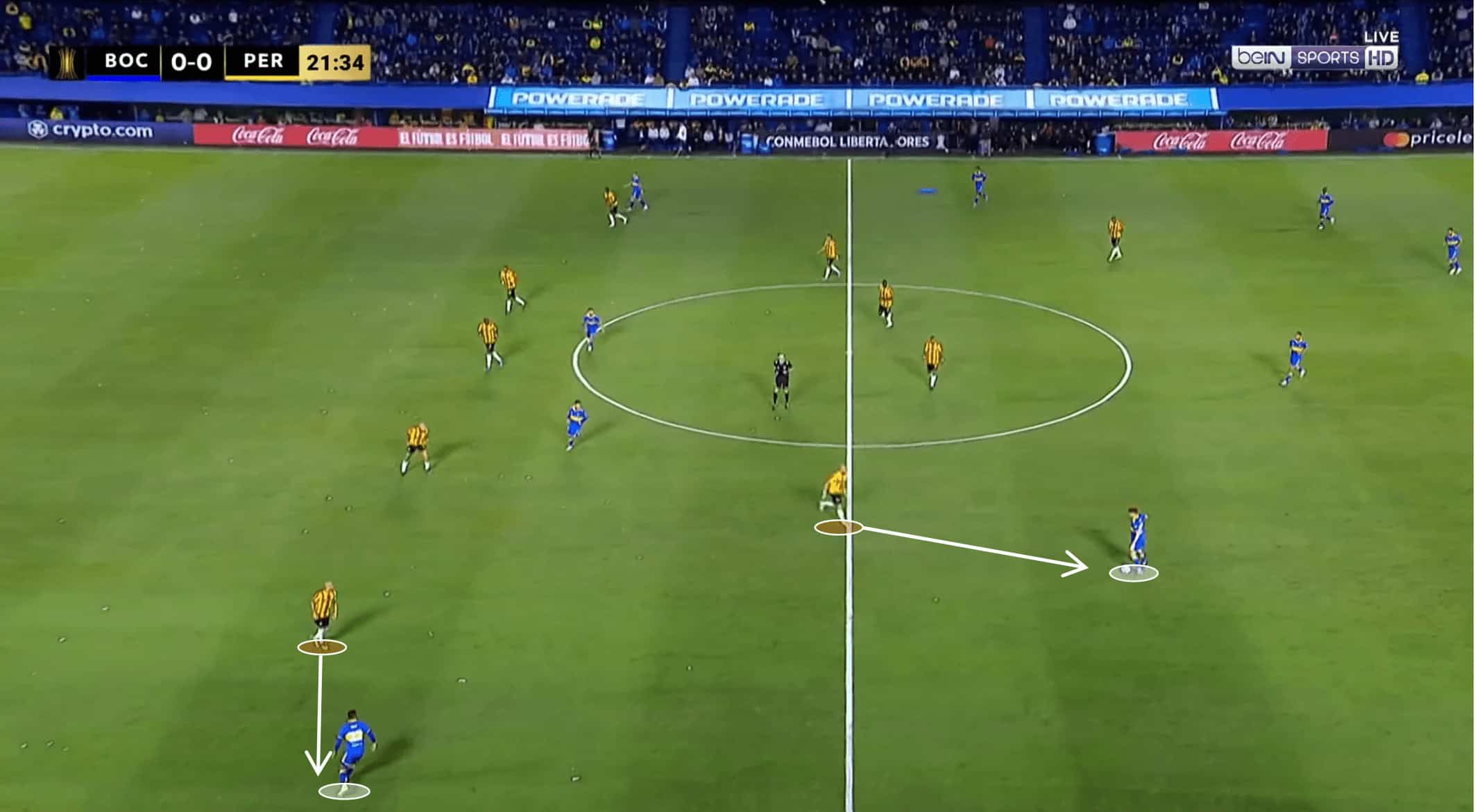
On the other hand, being inside the full-back also increases his odds of recovering the ball quickly after losing possession.
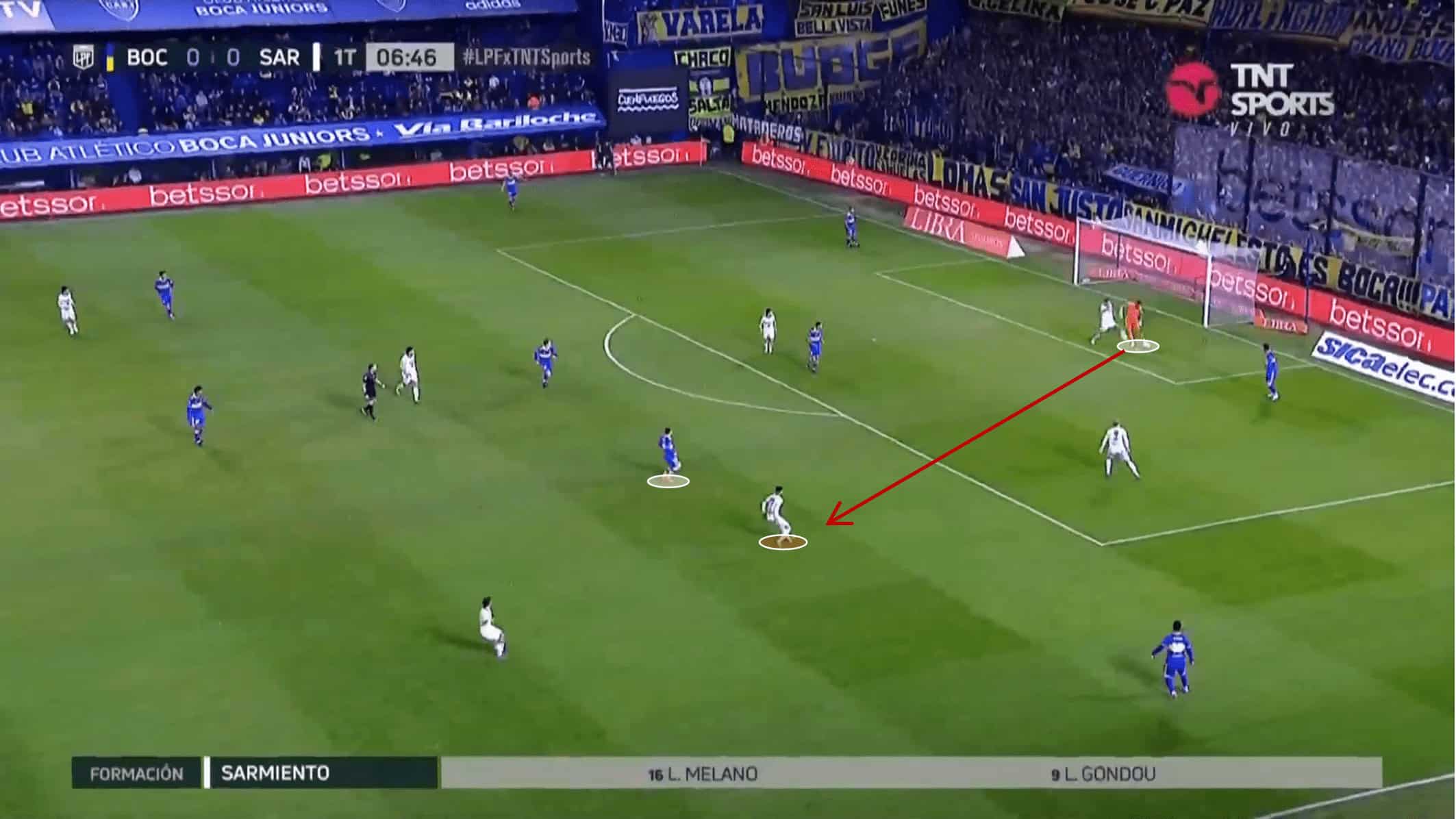
The fact that he is in the midfield area means that he is one extra element in the more central zone of the pitch, which can increase the odds for Boca to win the ball inside.
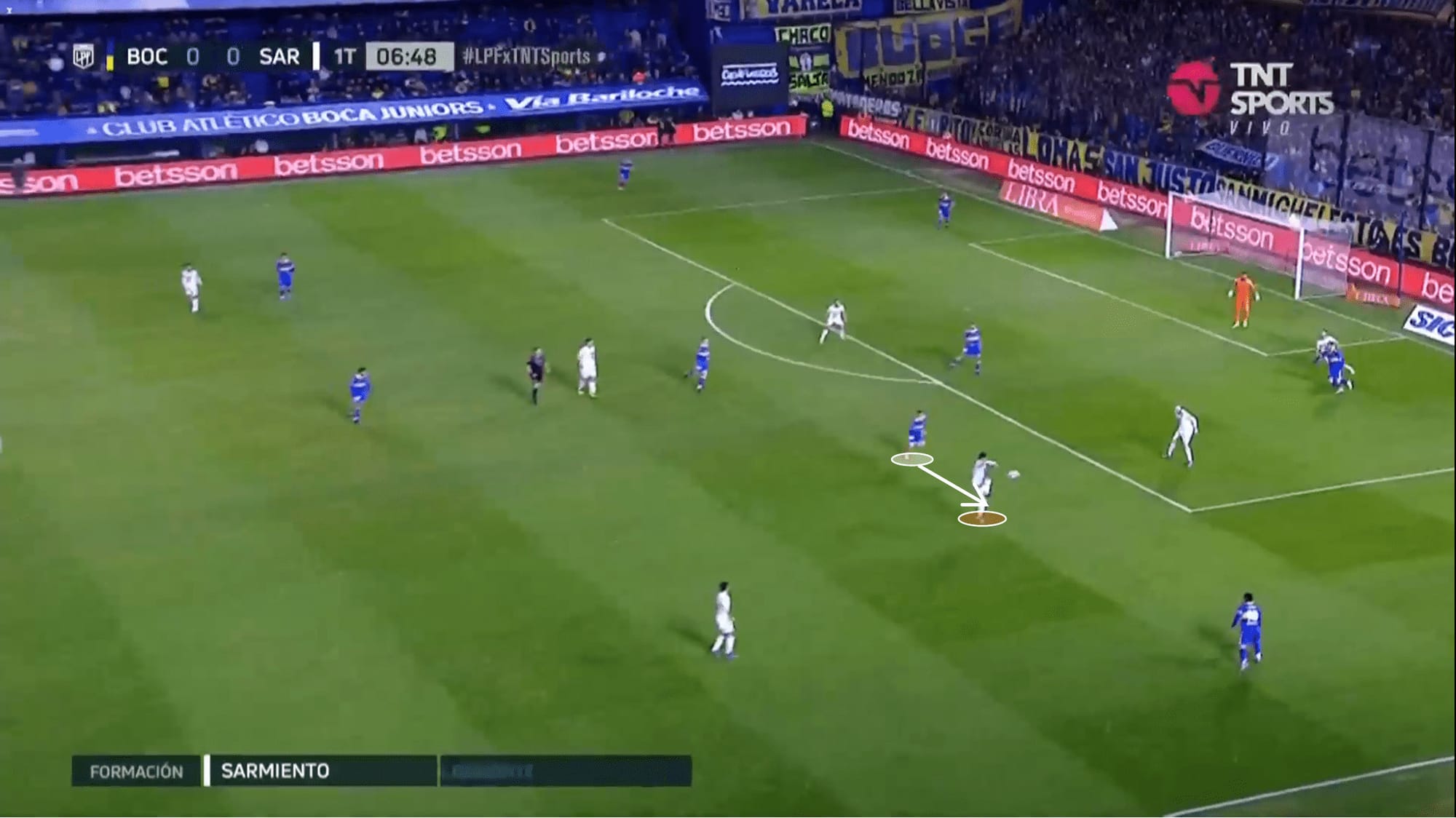
For a player to fit successfully in such a role, technical ability and a lot of tactical understanding are required to link the defence and the attack correctly, and Barco seems to have it all.
That said, this does not necessarily mean that Barco’s positioning is static; on the contrary, he is pretty mobile and versatile, always looking for free space, as we can see below.
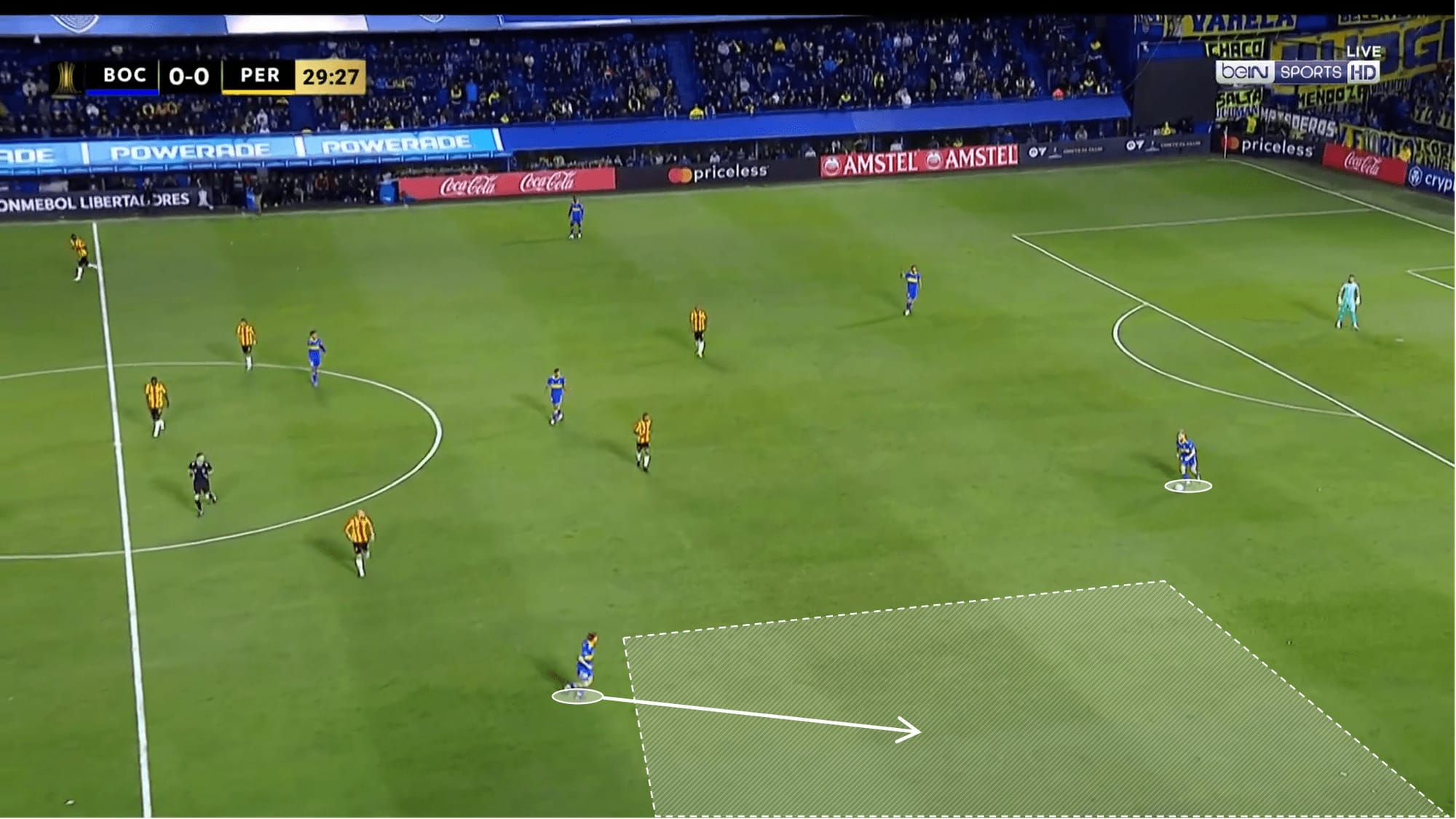
He usually also tries not to be in the same line with his flank partner; in other words, if the youngster is playing inside, the width is given by the winger or vice-versa.
This mobility can be better observed when playing as a winger, where he can be positioned deep/low or inside/out, depending on what the game is asking. As an example, we have this image which reveals Barco’s intentions to seek the back of the defenders from a more interior zone of the pitch.
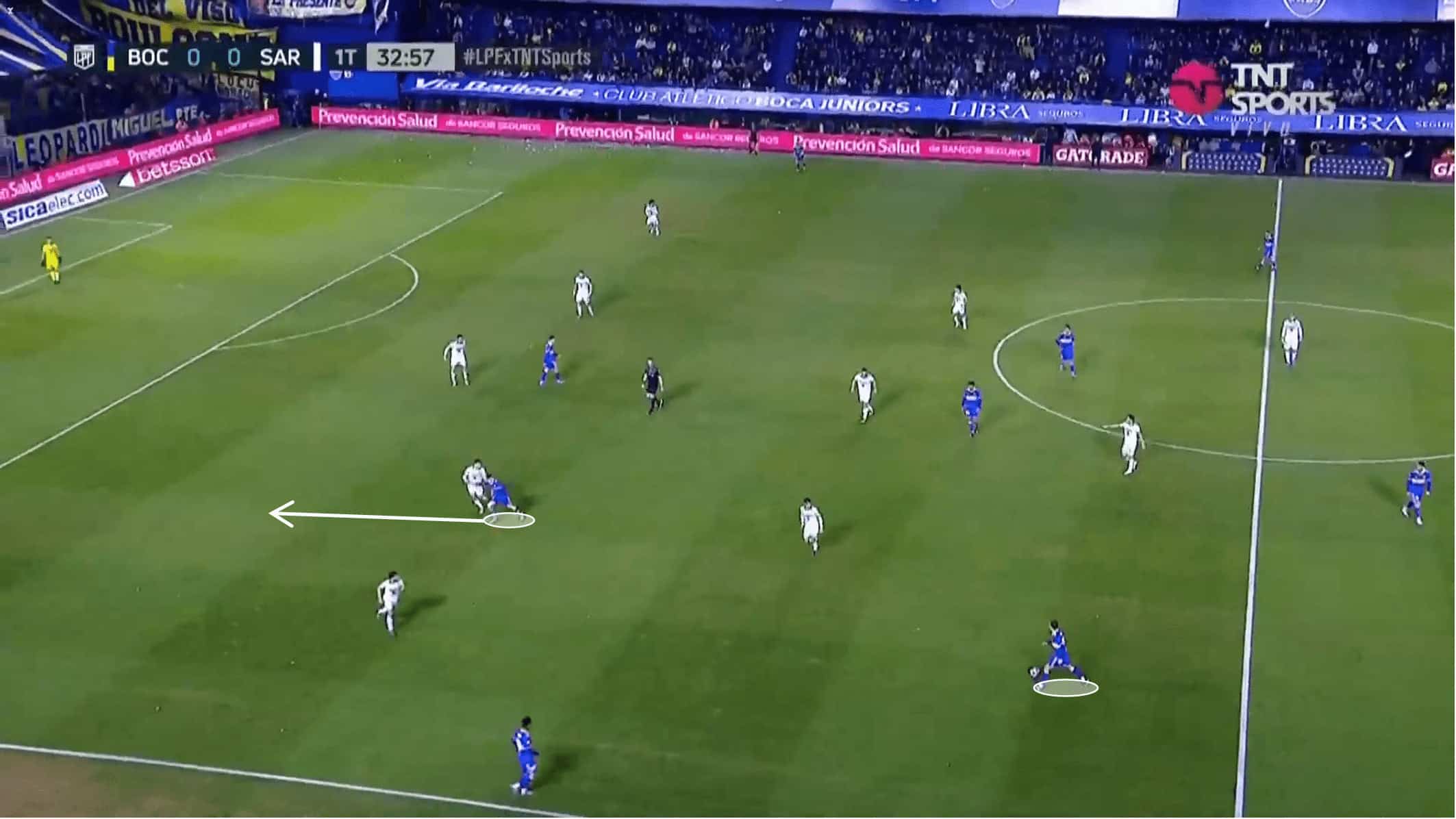
Below is another example of this versatility and understanding of the suitable space to occupy, where the Argentinian descends near the centrebacks to give an extra solution.
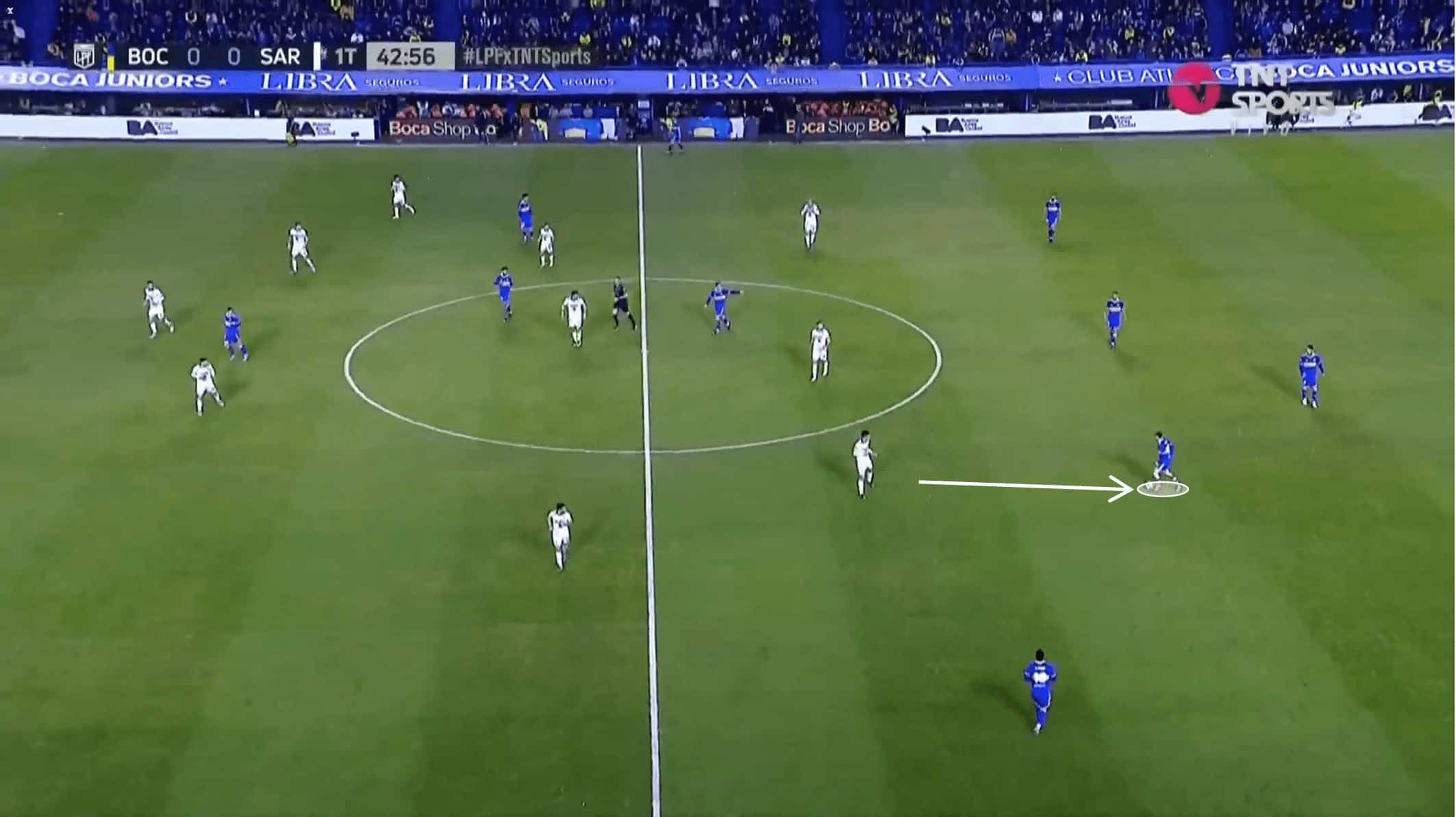
Out-of-possession Barco is an intense but not too aggressive player and seems to have a man-to-man marking during Boca’s pressing plan.
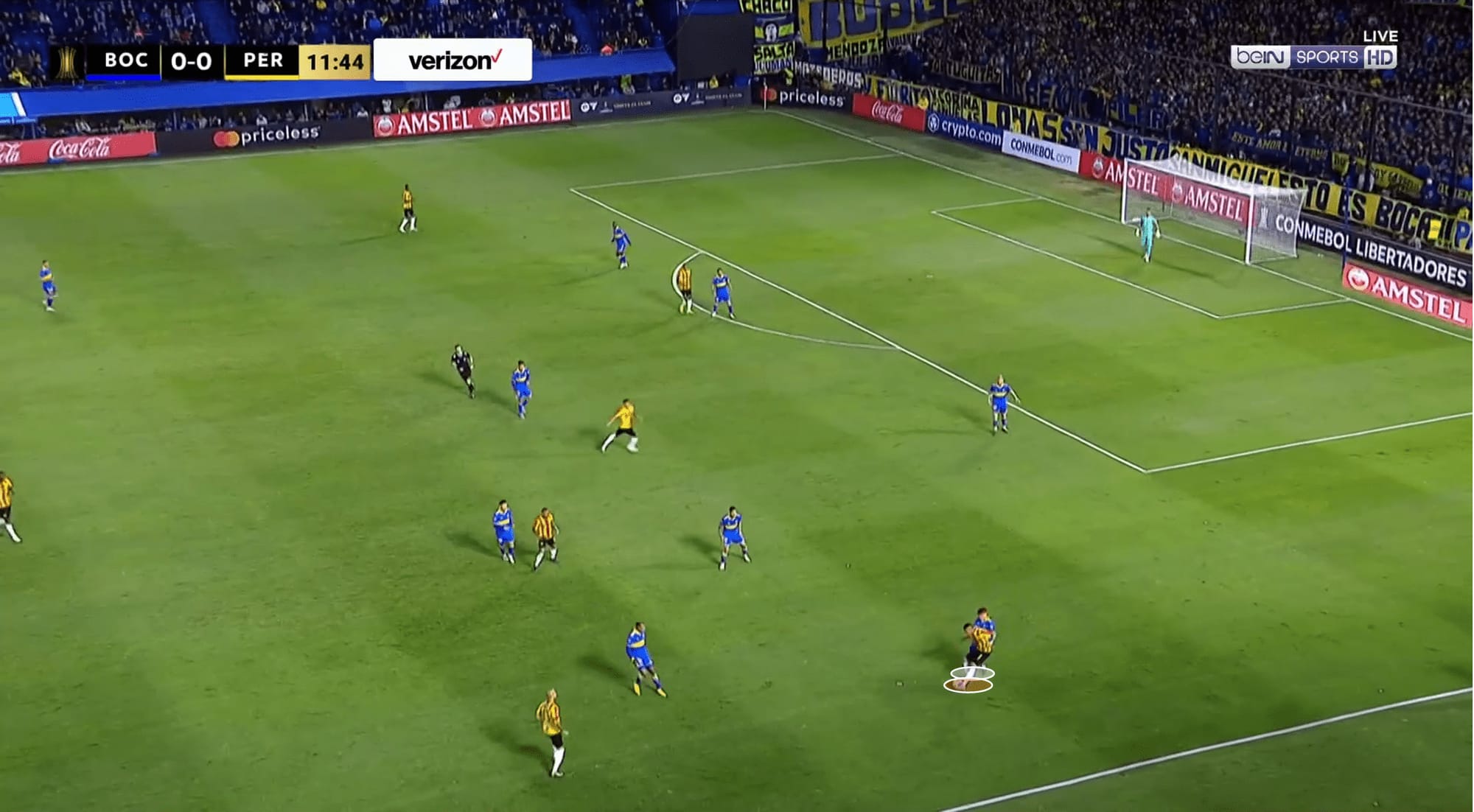
This and some difficulties in recovering to the backline lead to some irregularities in controlling depth, leaving Boca with just three elements or four if the defensive midfielder (a role usually played by Alan Varela) descends into the defensive line.
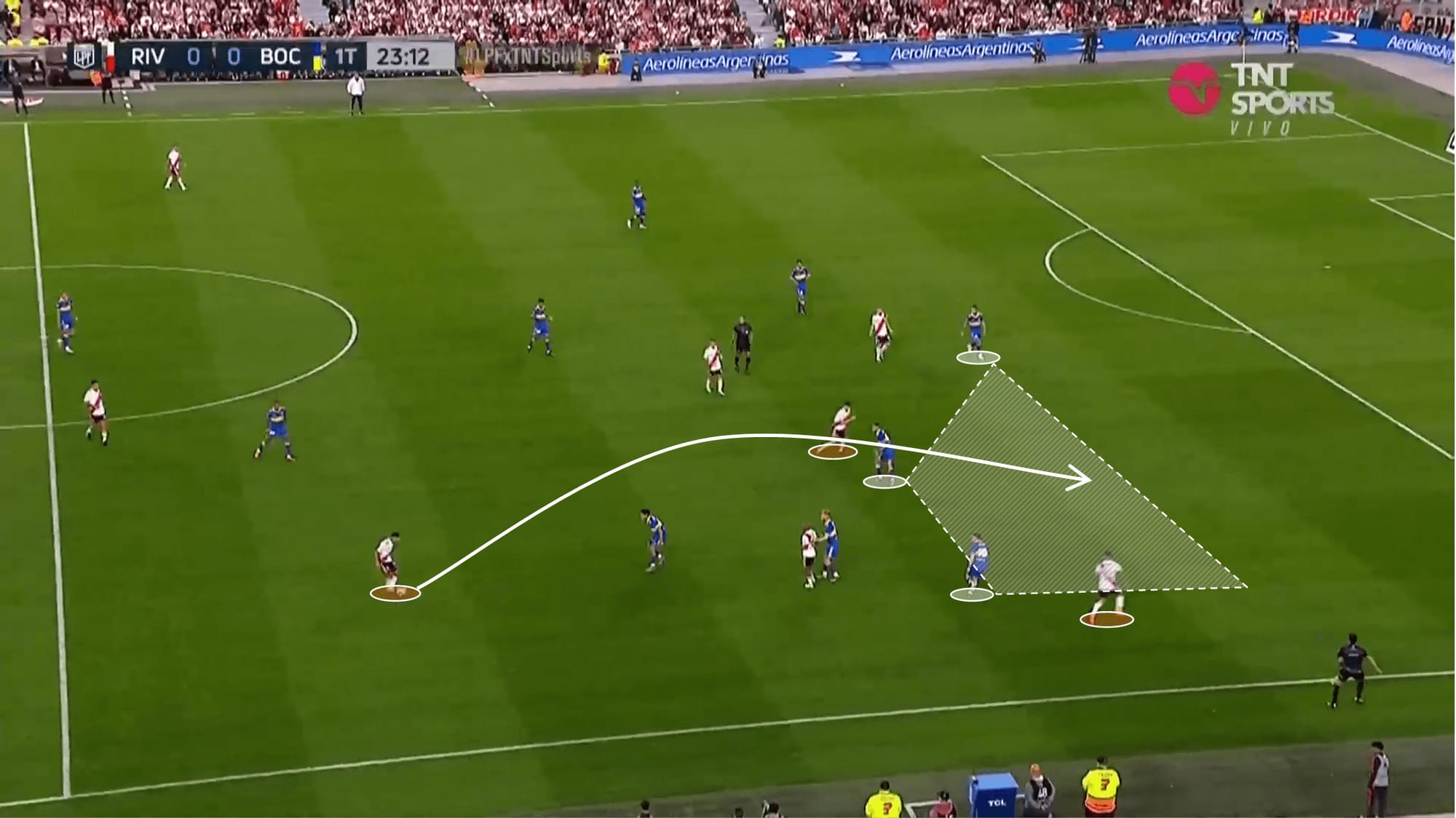
South American football, in general, is characterised by constant and repeated transitions, and defensive balance is a must if the team want to concede the lowest possible number of goals.
As we already stated, Barco’s dribbling and ball progression is something to consider, and his team benefits from it substantially, especially in counterattacks.
Conclusion
Valentín Barco is another up-and-coming talent from Argentinian football who has the particularity of experiencing one of the world’s most aggressive and physically demanding championships at such a young age.
He is a player characterised by his technicality and mobility on the ball, allowing him to pass and dribble over opponents. Yet he still needs to mature, especially in his decision-making, understanding where, when and how to progress with the ball.
In addition, he also shows comfort and quality while playing in more interior zones of the pitch, giving him the title of inverted full-back. Finally, during this scout report, we unveil some of the physical attributes he should work on to polish both his defensive and offensive duels.
We will follow his next steps closely, and in our view, a move to Brighton would be ideal due to the club’s philosophy of carefully developing young players in such a competitive league.






Comments